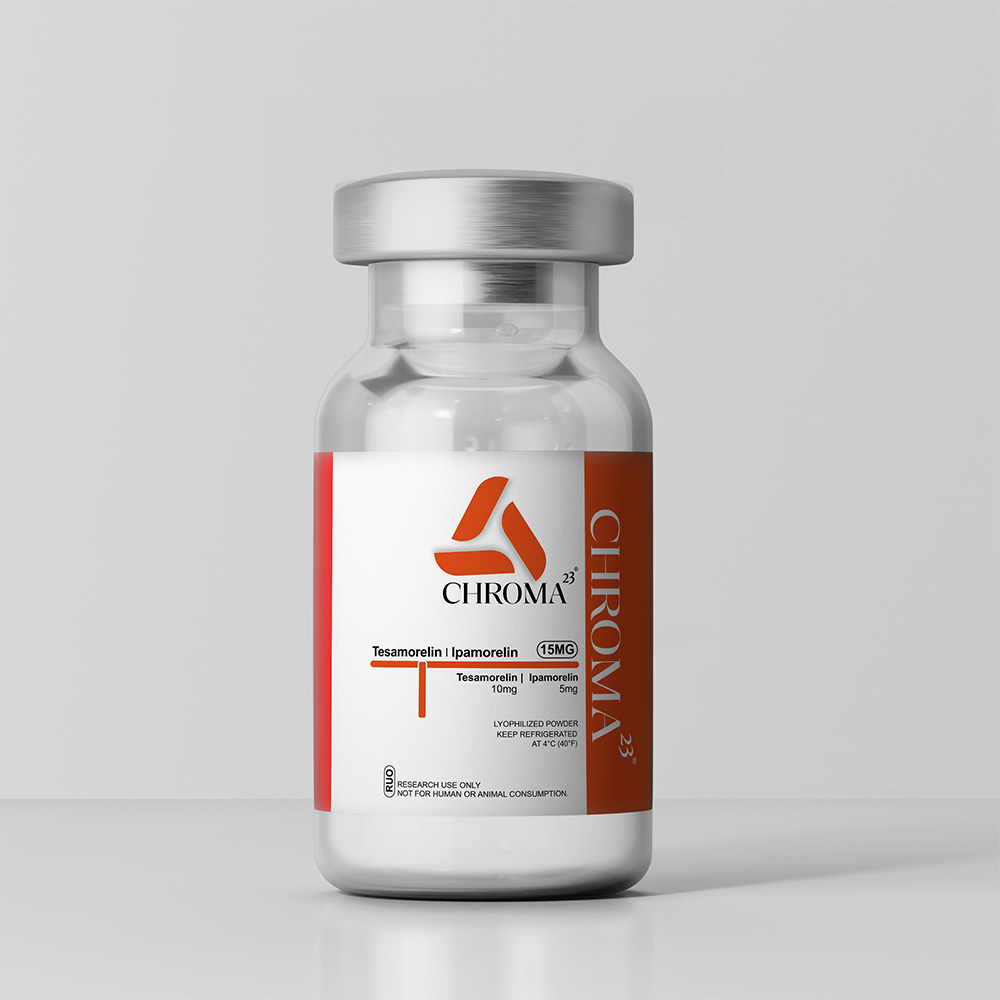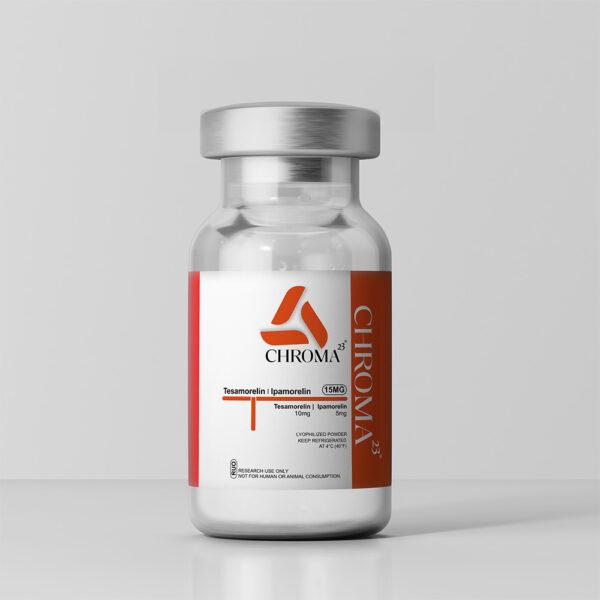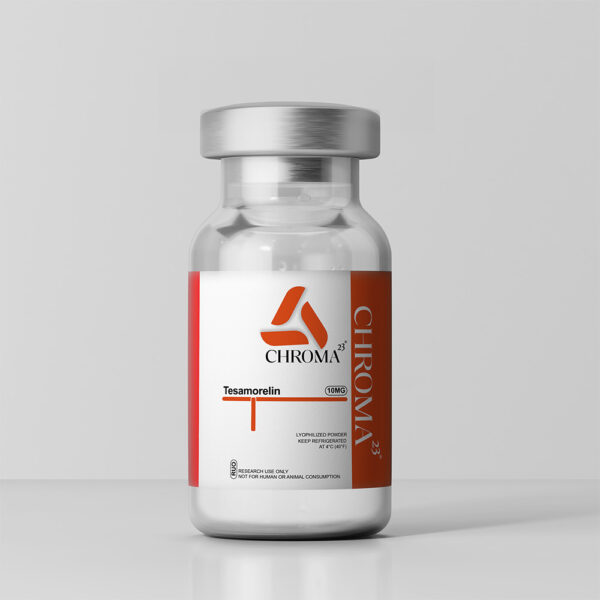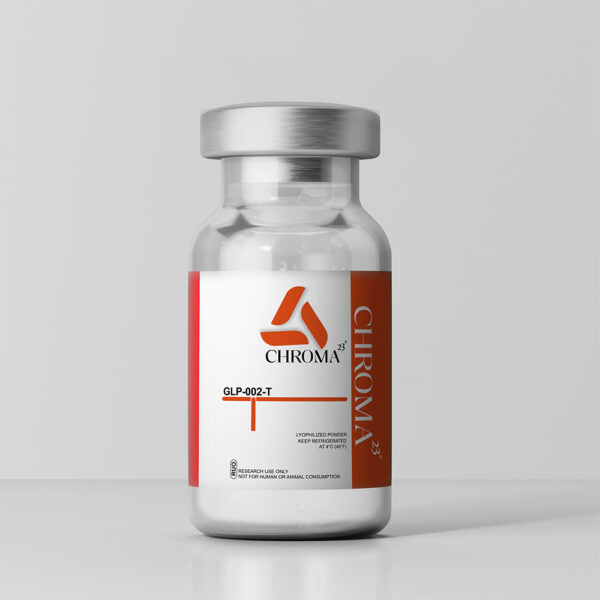The Tesamorelin + Ipamorelin blend is a scientifically designed combination of two potent growth hormone secretagogues. This formulation is tailored for researchers investigating endocrine signaling, GH secretion, and cellular metabolism. The peptides are carefully paired to support in-depth experimental analysis of hormonal interactions in vitro and in vivo.
Tesamorelin is a stabilized analog of endogenous GHRH. It functions by binding to GHRH receptors in the anterior pituitary, initiating the release of GH in a pulsatile pattern. Due to its enhanced stability and receptor-binding characteristics, Tesamorelin has been widely researched in models involving metabolic function, adipocyte signaling, and lipid regulation. Its ability to trigger IGF-1 production in GH-dependent pathways has also made it a subject of interest in regenerative and aging-related cellular studies.
Ipamorelin complements Tesamorelin by acting as a ghrelin mimetic. As a highly selective GHS-R1a receptor agonist, Ipamorelin induces GH release without significantly impacting ACTH, prolactin, or cortisol levels—an advantage over older secretagogues. This selectivity makes it particularly useful for dissecting the role of ghrelin-receptor activity within the broader endocrine system. Its clean receptor profile minimizes off-target effects, providing clearer insights into GH axis dynamics.
When used together, these peptides provide a potent research tool capable of producing both immediate and sustained GH responses. Tesamorelin’s action on GHRH receptors ensures longer-acting hormonal stimulation, while Ipamorelin delivers a rapid but clean pulse of GH activity. This dual-action blend enables more flexible and detailed study designs, including the analysis of dose-response relationships, receptor crosstalk, and circadian hormonal fluctuations.
Product Data
-
Blend Components:
-
Tesamorelin – 5 mg
-
Ipamorelin – 5 mg
-
-
CAS Numbers:
-
Tesamorelin: 218949-48-5
-
Ipamorelin: 170851-70-4
-
-
Molecular Formulas:
-
Tesamorelin: C221H366N72O67S
-
Ipamorelin: C49H74N14O10
-
-
Molecular Weights:
-
Tesamorelin: ~5135.89 g/mol
-
Ipamorelin: ~878.03 g/mol
-





